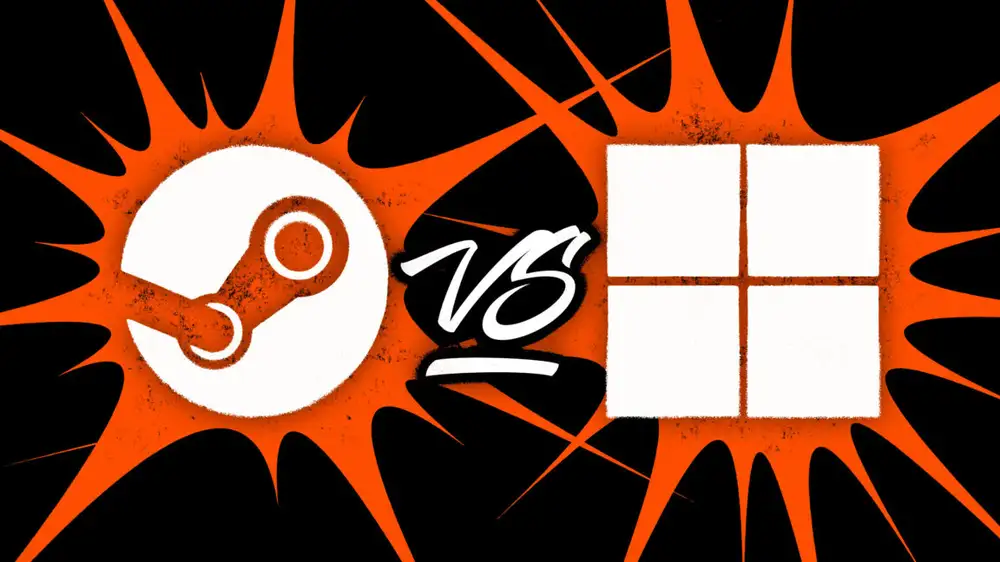Nearly a decade ago, Ars testing found that Valve's "Steam Machines"-era version of SteamOS performed significantly worse than Windows when SteamOS's Linux game ports were tested on the same hardware as their Windows counterparts. Today, though, Ars testing on the Lenovo Legion Go S finds recent games generally run at higher frame rates on SteamOS 3.7 than on Windows 11. The performance advantage is yet another way that Valve's upstart OS is differentiating itself from the "default" Windows installation used by most PC gamers for decades now.
While users have been able to install Windows on the Steam Deck since its 2022 launch, Valve doesn't offer official "Windows on Deck" support for this alternative hardware use case. Lenovo's Legion Go S, on the other hand, is the first gaming portable explicitly designed to work with either Windows 11 (in hardware first released in January) or SteamOS (in hardware first released in May, alongside a new version of SteamOS designed for non-Valve AMD hardware).
To test the performance impact of this operating system choice, we started with the SteamOS version of the Legion Go S (provided by Lenovo) and tested five high-end 3D games released in the last five years using built-in benchmarking tools and two different graphics/resolution tiers. We then installed Windows 11 on the handheld, downloaded updated drivers from Lenovo's support site, and re-ran the benchmarks on the same games downloaded through Steam for Windows.
During this process, we were unable to test Doom: The Dark Ages on Windows because of what the game reported were outdated drivers. Looking into the issue, we found a method for replacing Lenovo's official Legion Go graphics driver (last updated in January) with newer AMD-compatible drivers released by Asus for the ROG Ally (last updated in May). These newer drivers provide a closer analog to the drivers included with SteamOS but won't match the "out of the box" experience of Legion Go S Windows users who don't go through the extra hassle of tracking down and installing "unofficial" drivers from another source.
A clear improvement
As you can see in the included charts, SteamOS showed noticeable frame rate improvements in four of the five games tested. Only Borderlands 3 showed comparable performance across both operating systems, with Windows eking out ever-so-slightly higher frame rates in that game's benchmarks.
For the other four tested games, the stock Lenovo Windows drivers were sometimes significantly worse than those included with SteamOS. When playing Returnal at "High" graphics presets and 1920×1200 resolution, for instance, changing from Lenovo's Windows drivers to SteamOS meant the difference between a hard-to-take 18 FPS average and a downright decent 33 FPS average.
Sideloading the updated Asus drivers showed a noticeable improvement in Windows performance across all tested games and even brought Homeworld 3's "Low" graphics benchmark test to practical parity with SteamOS. In all other cases, though, even these updated drivers resulted in benchmark frame rates anywhere from 8 percent to 36 percent lower than those same benchmarks on SteamOS.
These results might seem a bit counterintuitive, considering that games running on SteamOS must go through a Proton translation layer for every native Windows instruction in a game's code. But Valve has put in consistent work over the years to make Proton as efficient and cross-compatible as possible; not to mention its continued work on Linux's Mesa graphics drivers seems to be paying dividends for SteamOS graphics performance.
Running SteamOS also means eliminating a lot of operating system overhead that the more generalist Windows uses by default. Microsoft seems aware of this issue for gamers and has recently announced that the upcoming "Xbox Experience for Handheld" will "minimize background activity and defer non-essential tasks" to allow for "more [and] higher framerates" in games.
A feather in Valve’s cap
Despite these performance improvements in many tested games, it's important to remember that there are other games that aren't compatible with SteamOS for one reason or another, and still others that require complex workarounds to run without Windows installed. And though Valve has made some recent improvements in SteamOS compatibility with non-Steam Deck hardware, the operating system still isn't compatible with the vast majority of PC hardware, including Intel CPUs, Nvidia GPUs, and even some newer AMD chips.
That said, the distinct advantage in game performance provides Valve with yet another strong selling point for SteamOS over Windows-based gaming handhelds. That's especially noteworthy when you consider that the $599 SteamOS-powered Legion Go S retails for $130 less than its Windows-powered counterpart (that difference between OS prices is down to $70 for the higher-powered Z1 Extreme edition of the Legion Go S). SteamOS also provides a much more seamless user interface and gaming experience than either stock Windows or various OEM Windows overlays, as we've discussed in the past.
While the original SteamOS was a millstone around the neck of Valve's failed Steam Machines effort, the current version of SteamOS is accumulating advantages over Windows' long-standing PC gaming standard. Now, if only Valve had a must-have SteamOS exclusive (or freebie) to encourage even more uptake.

 Hundreds of data brokers might be breaking state laws, say privacy advocates
Hundreds of data brokers might be breaking state laws, say privacy advocates